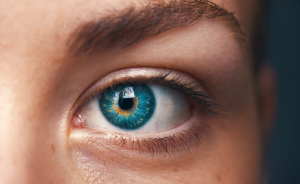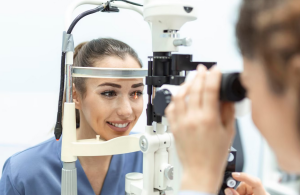Cataracts are a part of the natural aging process, but when they start affecting the sharpness and clarity of your vision, it’s a cause for attention. These cloudy patches that develop in the lens of the eye can significantly impair one’s ability to see and enjoy daily activities.
What Are Cataracts
Contents
Cataracts are like frosted glass on a camera lens—they obstruct the passage of light and impair the quality of vision. The condition is most often linked to aging, with the lens inside the eye becoming less clear as proteins within the lens break down and clump together. As these protein clumps expand, they can make your sight cloudy and even change the sharpness of colours you see.
Different types of cataracts impact the eye in specific ways. Age-related cataracts are by far the most prevalent, with most people over the age of 80 either having cataracts or having undergone cataract surgery. There are, however, other types worth noting: congenital cataracts, which can occur in newborns due to inherited genetic disorders; secondary cataracts, which develop from other medical conditions or certain medications; and traumatic cataracts, which stem from eye injuries. These types offer a window into potential underlying causes and can influence the preventive care or treatment you receive.

Recognizing Cataract Symptoms
Noticing symptoms of cataracts in their infancy can help you take steps toward treatment sooner. Initially, you might experience slight blurring of your sight, difficulty seeing in dim light, or colours might not seem as bright as they once did. You may also find glare from lamps or the sun to be more piercing than before. These changes may appear trivial at first but realising they could signal the onset of cataracts is crucial for early intervention.
However, as cataracts advance, so do the symptoms. You might discover that your eyewear prescription no longer suffices, leading to frequent changes. There can be a noticeable yellowing or clouding of the lens, making it difficult to discern fine details, recognize faces, or read. It is at this stage that cataracts often start interfering with daily life, prompting individuals to seek professional eye care advice.
It’s important to seek medical advice as soon as you notice any changes to your vision. Early on, simple solutions like stronger glasses or brighter reading lights can make a big difference. Yet, as the condition worsens, more substantial intervention may become necessary. Regular eye exams are integral to catching problems early and accessing timely treatment.

Cataract Treatment Options
The initial approach to managing cataracts often includes non-surgical methods such as updating prescription glasses or lenses and employing tools like magnifying glasses. Sometimes, simply adjusting the lighting in your home can help. These measures can improve your quality of life in the short term, but won’t stop cataracts from getting worse over time. Subtle lifestyle choices, including wearing sunglasses to protect against UV rays, can play a role in cataract prevention.
Once cataracts begin significantly disrupting your ability to enjoy life—perhaps making it tough to read, drive, or recognise loved ones—cataract surgery may be recommended. This elective surgery is not urgent but becomes an option when the cataracts have progressed enough to be bothersome. It’s an incredibly common and safe form of surgery with the primary goal of restoring your vision to its former clarity.
During cataract surgery, a highly specialised ultrasonic device breaks the cloudy lens into small pieces, which are then removed. The natural lens is replaced with a synthetic intraocular lens (IOL), which is carefully chosen to fit your visual needs. The type of IOL and the surgical method vary on a case-by-case basis, and your ophthalmologist will help you make the best choice for your eyes.
After surgery, diligent care is needed to ensure a swift recovery. You’ll likely be prescribed eye drops to prevent infection, and you’ll have follow-up appointments to check on the healing progress. While you might get back to your routine quickly, heavy lifting and strenuous activities will be off-limits for some time post-surgery.

Cataract Prevention Strategies
Age plays a significant role in the development of cataracts, and while you can’t stop the clock, certain lifestyle adjustments may help keep cataracts at bay. Smoking and excessive alcohol intake are both risk factors for cataract development, as is prolonged exposure to UV radiation. People with underlying health issues, such as diabetes, should be particularly vigilant. Regular eye examinations can help monitor the condition closely.
It’s also believed that diet and exercise have a part to play in eye health. Diets rich in vitamins, particularly antioxidants like vitamin C and E, are recommended for maintaining eye health. Wearing UV-blocking sunglasses is another tangible step you can take to protect your eyes from potential cataract-causing sun damage.
Routine eye exams are a cornerstone of eye care, vital for spotting not only cataracts but other issues that might compromise your vision. Adults over 40 should consider getting their eyes checked every two years, and annually past the age of 60. For individuals with a family history of eye conditions or who have previously encountered eye health problems, more frequent check-ups may be advisable.
Frequently Asked Questions About Cataracts
Many wonder whether cataracts can be completely ‘cured’. Cataracts themselves cannot be undone, but the surgical removal of the clouded lens and its replacement with an IOL effectively restores vision. Complications from surgery are rare but can happen, so it’s important to meticulously follow post-operative care instructions and attend all follow-up appointments.
People often ask how long cataract surgery takes and if it’s safe. This procedure is typically completed in about half an hour and is known for its high success rate and safety profile. The process is so streamlined that patients can usually go home the same day, and the actual surgery involves minimal discomfort due to local anesthesia.
Age seldom restricts someone from undergoing cataract treatments. Decisions about surgery hinge on the impact on quality of life more than the number of candles on your birthday cake. Advances in medical technology mean that even the elderly can safely go through cataract surgery with good outcomes.
The long-term prognosis for individuals with cataracts is very positive, with many experiencing a significant improvement in vision post-surgery. In most cases, people can enjoy a comparable level of sight to what they had before cataracts developed. The synthetic lenses used are designed to last a lifetime, making cataract surgery a highly effective long-term solution.

The development of cataracts can notably affect one’s vision and quality of life. Awareness of symptoms and early intervention are vital in managing the condition. Lifestyle and protective measures can help delay the progression of cataracts.
Regular checks and eye exams remain crucial at all stages of life to preserve eye health. Remember that while some aspects of cataracts are beyond our control, there’s much you can do to keep your vision sharp and fend off the effects of this common condition. Stay proactive, consult with eye care professionals, and don’t let cataracts blur the beauty of the world around you.

